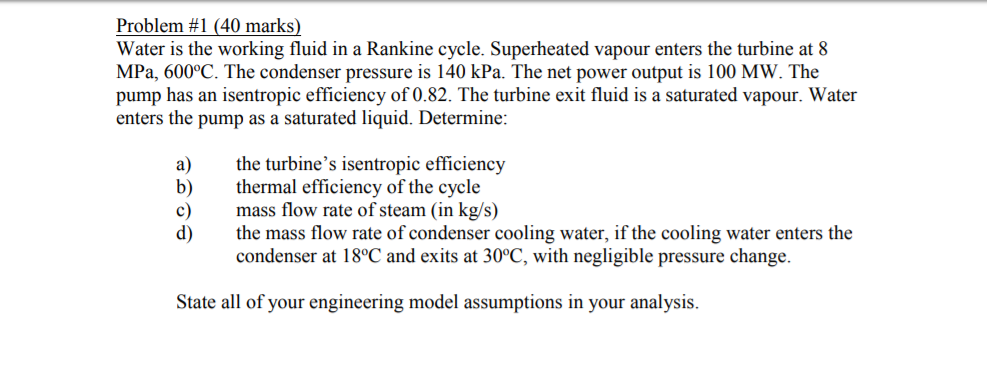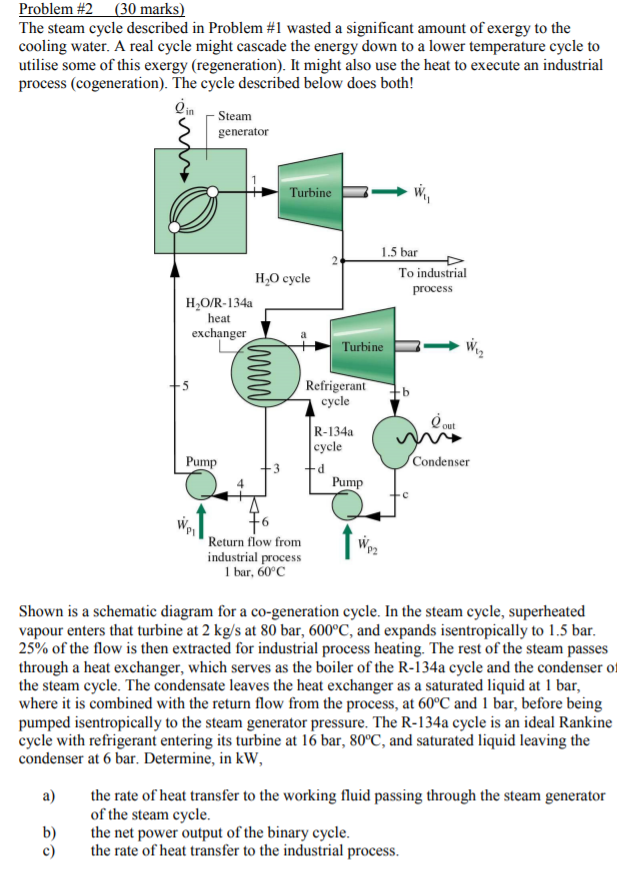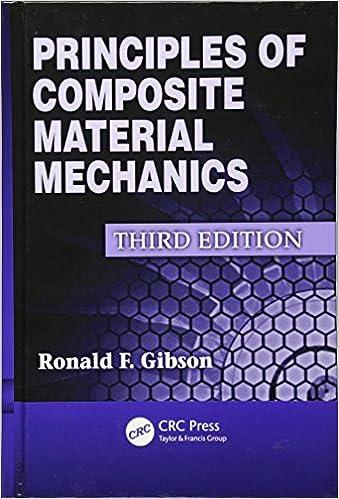Question
Problem #1 (40 marks) Water is the working fluid in a Rankine cycle. Superheated vapour enters the turbine at 8 MPa, 600C. The condenser


Problem #1 (40 marks) Water is the working fluid in a Rankine cycle. Superheated vapour enters the turbine at 8 MPa, 600C. The condenser pressure is 140 kPa. The net power output is 100 MW. The pump has an isentropic efficiency of 0.82. The turbine exit fluid is a saturated vapour. Water enters the pump as a saturated liquid. Determine: a) b) c) d) the turbine's isentropic efficiency thermal efficiency of the cycle mass flow rate of steam (in kg/s) the mass flow rate of condenser cooling water, if the cooling water enters the condenser at 18C and exits at 30C, with negligible pressure change. State all of your engineering model assumptions in your analysis. Problem #2 (30 marks) The steam cycle described in Problem #1 wasted a significant amount of exergy to the cooling water. A real cycle might cascade the energy down to a lower temperature cycle to utilise some of this exergy (regeneration). It might also use the heat to execute an industrial process (cogeneration). The cycle described below does both! Qin Steam generator HO/R-134a heat exchanger Pump Turbine W HO cycle ww F6 1.5 bar Turbine Refrigerant cycle To industrial process Qout R-134a cycle ~ Condenser d Pump Return flow from industrial process 1 bar, 60C WP2 Shown is a schematic diagram for a co-generation cycle. In the steam cycle, superheated vapour enters that turbine at 2 kg/s at 80 bar, 600C, and expands isentropically to 1.5 bar. 25% of the flow is then extracted for industrial process heating. The rest of the steam passes through a heat exchanger, which serves as the boiler of the R-134a cycle and the condenser of the steam cycle. The condensate leaves the heat exchanger as a saturated liquid at 1 bar, where it is combined with the return flow from the process, at 60C and 1 bar, before being pumped isentropically to the steam generator pressure. The R-134a cycle is an ideal Rankine cycle with refrigerant entering its turbine at 16 bar, 80C, and saturated liquid leaving the condenser at 6 bar. Determine, in kW, the rate of heat transfer to the working fluid passing through the steam generator of the steam cycle. a) b) the net power output of the binary cycle. c) the rate of heat transfer to the industrial process.
Step by Step Solution
There are 3 Steps involved in it
Step: 1
solution ...
Get Instant Access with AI-Powered Solutions
See step-by-step solutions with expert insights and AI powered tools for academic success
Step: 2

Step: 3

Ace Your Homework with AI
Get the answers you need in no time with our AI-driven, step-by-step assistance
Get Started


